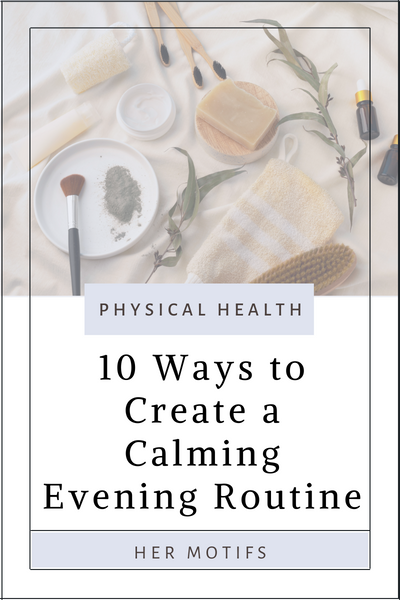Top 10 Mental Health Self Care Tips
 Mental Health Self Care Tips refer to various strategies and practices that individuals can adopt to support and enhance their mental well-being.
Mental Health Self Care Tips refer to various strategies and practices that individuals can adopt to support and enhance their mental well-being.
These tips are aimed at promoting positive mental health, managing stress, and building resilience. Mental health self-care involves taking proactive steps to prioritize and nurture one’s mental and emotional well-being.
Taking care of our mental health is essential for overall well-being and quality of life. Mental health self-care involves intentionally engaging in practices and activities that promote emotional well-being, manage stress, and enhance our mental resilience. In today’s fast-paced and demanding world, it is crucial to prioritize self-care strategies that nurture our mental health and create a sense of balance.
In this article, we will explore various mental health self-care tips and techniques that can help individuals cultivate a positive mindset, cope with stress, and maintain emotional well-being. These tips are designed to provide guidance and support in managing common mental health challenges such as anxiety, depression, and stress. From the practice of mindfulness and the importance of setting boundaries to the benefits of seeking professional support and the transformative power of self-compassion, these tips are designed to empower you with actionable strategies to elevate your mental health.
Whether you’re looking to build resilience, manage stress, or simply cultivate a deeper sense of inner peace, this guide serves as a roadmap toward prioritizing your mental well-being. So, let’s embark on this transformative journey, where self-care becomes an act of self-love and mental health becomes a foundation for a life of resilience, balance, and flourishing.
.
Table of Contents
Positive Daily Affirmations
These are some of our favorite positive affirmations that help us refocus on creating effective positive daily affirmations and how keep track of our progress.
.
1. Set Boundaries
Setting boundaries refers to establishing and maintaining limits in various aspects of our lives to protect our well-being, preserve our energy, and maintain healthy relationships.
Boundaries define what is acceptable or unacceptable in terms of our personal space, time, emotions, and relationships. Here are three examples of setting boundaries:
- Personal Space: Setting boundaries around personal or work space involves defining the physical boundaries that make us feel comfortable and secure. For example, it could mean communicating to others that we need privacy in certain areas of our home or setting limits on physical contact based on our comfort level.
- Time and Energy: Setting boundaries around time and energy involves prioritizing our needs and responsibilities and ensuring that we allocate time and energy accordingly.
- Emotional Boundaries: Establishing emotional boundaries involves communicating our feelings, needs, and limits to others. It means being clear about what is acceptable in terms of how others treat us and how we allow ourselves to be treated.
.
2. Get Enough Sleep
Getting enough sleep is an essential aspect of self-care and plays a vital role in maintaining overall health and well-being.
Sleep is the time when our bodies and minds rejuvenate and repair, allowing us to function optimally during the day. Here are three examples of the benefits of getting enough sleep:
- Physical Restoration: Sufficient sleep promotes physical restoration by allowing our bodies to heal, recover, and recharge. It supports immune function, helps regulate metabolism, and promotes the repair of tissues and cells. When we get enough sleep, we wake up feeling refreshed and energized, ready to take on the day.
- Emotional Well-being: Sleep plays a significant role in regulating our emotions and mood. When we are well-rested, we are better equipped to manage stress, regulate our emotions, and maintain emotional balance. On the other hand, sleep deprivation can contribute to irritability, mood swings, and increased susceptibility to negative emotions.
To prioritize getting enough sleep, establish a consistent sleep schedule, aiming for 7-9 hours of sleep per night. Create a bedtime routine that promotes relaxation and signals to your body that it’s time to wind down. Create a sleep-friendly environment by ensuring a comfortable mattress, eliminating distractions, and keeping the bedroom cool, dark, and quiet.
.
3. Practice Mindfulness
Mindfulness involves being fully present in the moment and non-judgmentally observing your thoughts and emotions. This practice can help reduce stress and improve mental well-being.
Practicing mindfulness is an effective self-care strategy that involves paying deliberate attention to the present moment without judgment. It allows us to cultivate a sense of calm, awareness, and acceptance of our thoughts, feelings, and sensations. Here are three examples of how to practice mindfulness:
- Mindful Breathing: One way to practice mindfulness is to focus on your breath. Take a few moments to observe your breath as it enters and leaves your body. Notice the sensation of the breath, the rise and fall of your chest or belly, and the feeling of air passing through your nostrils.
- Mindful Eating: Practice mindful eating by bringing your full attention to the experience of eating. Slow down and savor each bite, noticing the flavors, textures, and smells of the food. Pay attention to how your body responds to the food and the feelings of hunger and fullness.
Through consistent practice of mindfulness tends to form an abundant mindset, we can become more attuned to the present moment, reduce stress and anxiety, and cultivate a greater sense of overall well-being. Mindfulness enables us to respond to life’s challenges with greater clarity, compassion, and resilience.
.
4. Engage in Physical Activity
Physical activity helps us maintain a healthy body, manage stress, improve mood, and boost overall energy levels. Here are three examples of how to engage in physical activity:
- Cardiovascular Exercises: Participate in activities that get your heart rate up and increase cardiovascular endurance. This can include brisk walking, jogging, cycling, swimming, dancing, or participating in aerobics classes.
- Strength Training: Incorporate strength training exercises into your routine to build muscle strength and endurance. This can involve using weights, resistance bands, or bodyweight exercises like push-ups, squats, and lunges. .
- Mind-Body Exercises: Engage in mind-body exercises such as yoga, Pilates, or tai chi. These practices combine physical movement with breath control, mindfulness, and relaxation techniques.
By incorporating physical activity into our daily lives, we can experience numerous benefits, including improved physical fitness, enhanced mental well-being, increased energy levels, and reduced risk of chronic diseases.
.
5. Eat a Healthy Diet
A balanced and nutritious diet can help support mental health and well-being. Aim for a diet rich in fruits, vegetables, whole grains, lean protein, and healthy fats.
Eating a healthy diet is a crucial component of self-care as it provides our bodies with the necessary nutrients to function optimally and maintain overall well-being. A balanced and nutritious diet supports physical health, boosts energy levels, supports mental clarity, and helps prevent chronic diseases. Here are three examples of how to eat a healthy diet:
- Incorporate Whole Foods: Focus on consuming whole foods that are minimally processed and rich in nutrients. Include a variety of fruits, vegetables, whole grains, lean proteins, and healthy fats in your meals. These foods provide essential vitamins, minerals, fiber, and antioxidants that promote good health and support your body’s functioning.
- Stay Hydrated: Drink an adequate amount of water throughout the day to maintain proper hydration. Water plays a vital role in digestion, nutrient absorption, detoxification, and overall cellular function. Aim to drink at least eight glasses of water per day, and adjust your intake based on factors like activity level and climate.
By adopting a healthy diet, you nourish your body with the essential nutrients it needs to thrive. Eating a balanced diet supports physical health, mental clarity, and emotional well-being, ultimately contributing to an overall sense of vitality and improved quality of life.
.
6. Stay Hydrated
Proper hydration is essential for various bodily functions, including regulating body temperature, supporting digestion, maintaining organ function, and promoting healthy skin.
- Drink Sufficient Water: Water is the best and most natural way to stay hydrated. Aim to drink at least eight glasses of water per day, or more if you are physically active or in hot weather. Keep a water bottle with you throughout the day as a reminder to hydrate regularly.
- Consume Hydrating Foods: Many fruits and vegetables have high water content and can contribute to your overall hydration. Include hydrating foods in your diet such as cucumbers, watermelon, strawberries, oranges, celery, and leafy greens. These foods not only provide water but also offer valuable vitamins, minerals, and antioxidants.
- Limit Dehydrating Beverages: Certain beverages, such as caffeinated or alcoholic drinks, can contribute to dehydration. While it’s not necessary to eliminate them entirely, it’s important to consume them in moderation and balance them with hydrating options like water or herbal teas.
By prioritizing hydration and incorporating these practices into your daily routine, you can support your body’s functioning, maintain energy levels, and promote overall well-being.
.
7. Practice Relaxation Techniques
Practicing relaxation techniques is a valuable self-care strategy that can help manage stress, promote mental well-being, and enhance overall relaxation.
These techniques encourage the body and mind to enter a state of calm and reduce feelings of tension or anxiety. Here are three examples of relaxation techniques you can incorporate into your self-care routine:
- Progressive Muscle Relaxation: This technique involves systematically tensing and releasing different muscle groups in your body to promote relaxation. Start by tensing the muscles in one area, such as your hands, for a few seconds, and then release the tension as you exhale. Move on to other muscle groups, working your way up from your feet to your head. Progressive muscle relaxation helps relieve physical tension and promotes a sense of relaxation throughout the body.
- Guided imagery involves using your imagination to create a calming and peaceful mental image. Find a quiet space, close your eyes, and visualize yourself in a serene and tranquil setting. It could be a beach, a forest, or any place that brings you a sense of peace. Engage your senses and imagine the sights, sounds, and smells of this place. Guided imagery helps redirect your focus away from stress and promotes relaxation.
By incorporating relaxation techniques into your self-care routine, you can proactively manage stress, reduce anxiety, and promote a greater sense of calm and well-being. Experiment with different techniques to find what works best for you and make it a regular practice to reap the benefits of relaxation.
.
8 Seek Social Support
Connecting with others, sharing our thoughts and feelings, and receiving support can provide a sense of validation, comfort, and understanding.
Seeking social support is an essential aspect of self-care that can greatly contribute to our emotional well-being and overall happiness. Here are three examples of seeking social support:
- Reach out to Friends and Family: When facing challenges or feeling overwhelmed, reaching out to trusted friends and family members can provide a valuable support system. Share your concerns, thoughts, or simply spend time together, whether it’s through a phone call, video chat, or meeting in person. Their presence and willingness to listen can offer emotional support and a sense of connection.
- Join Support Groups or Communities: Many support groups and communities exist for specific topics or challenges, such as mental health, parenting, or grief. These groups provide a safe and understanding space to connect with others who may be going through similar experiences.
- Seek Professional Help: Sometimes, seeking professional help from therapists, counselors, or support helplines is necessary to address specific mental health concerns or complex emotional issues. These professionals can provide guidance, tools, and therapeutic support tailored to your needs.
By seeking social support, we allow ourselves to lean on others during challenging times, share our burdens, and receive the encouragement and empathy that can help us navigate through difficulties.
.
9. Practice Self Compassion
Practicing self-compassion is a powerful self-care strategy that involves treating ourselves with kindness, understanding, and acceptance, especially during times of struggle or difficulty.
It entails extending the same compassion and empathy towards ourselves as we would towards others. Here are three examples of practicing self-compassion:
- Speak to Yourself with Kindness: Pay attention to your inner dialogue and practice replacing self-critical or negative thoughts with kind and supportive ones. Treat yourself as you would a close friend or loved one, offering words of encouragement, understanding, and forgiveness. Cultivate self-compassionate language and affirmations that acknowledge your efforts, strengths, and resilience.
- Embrace Imperfections and Mistakes: Recognize that making mistakes and facing challenges is a normal part of being human. Instead of berating yourself for perceived failures or shortcomings, practice self-compassion by acknowledging your humanness and offering yourself understanding and forgiveness.
Practicing self-compassion allows us to cultivate a gentler and more nurturing relationship with ourselves. It helps us develop resilience, cope with difficulties, and build a foundation of self-worth and self-acceptance.
.
10. Seek Professional Help
Seeking professional help is an important aspect of self-care, particularly when dealing with complex or persistent mental health issues.
It involves reaching out to trained professionals who can offer specialized support and guidance. Here are three examples of seeking professional help:
- Support Groups: Joining a support group allows you to connect with others who may be experiencing similar challenges. These groups provide a space for sharing experiences, gaining insights, and receiving support from individuals who understand your struggles firsthand.
- Support Hotlines and Helplines: Support hotlines and helplines are available for immediate assistance during times of crisis or emotional distress. These services are staffed by trained professionals who can provide guidance, emotional support, and resources. Examples include suicide hotlines, crisis helplines, and mental health support lines.
Seeking professional help is a courageous step towards prioritizing your mental well-being. Professionals have the expertise and experience to provide evidence-based interventions and support tailored to your unique needs.
.
Conclusion
In conclusion, practicing mental health self-care is vital for overall well-being and maintaining emotional balance. By setting boundaries, getting enough sleep, practicing mindfulness, engaging in physical activity, maintaining a healthy diet, staying hydrated, practicing relaxation techniques, seeking social support, practicing self-compassion, and seeking professional help when needed, individuals can cultivate resilience, reduce stress, and enhance their mental well-being.
These self-care practices empower individuals to take an active role in their mental health, promoting self-awareness, self-compassion, and personal growth. Incorporating these tips into daily routines can have a profound positive impact on mental health, allowing individuals to thrive and live their lives to the fullest.
.
- 100 Valentine Lovers Questions - February 24, 2025
- 2025 New Year Growth Quotes - February 24, 2025
- 2025 Inspiring Self Love Quotes - February 24, 2025













